Talbot Rice Gallery at 50
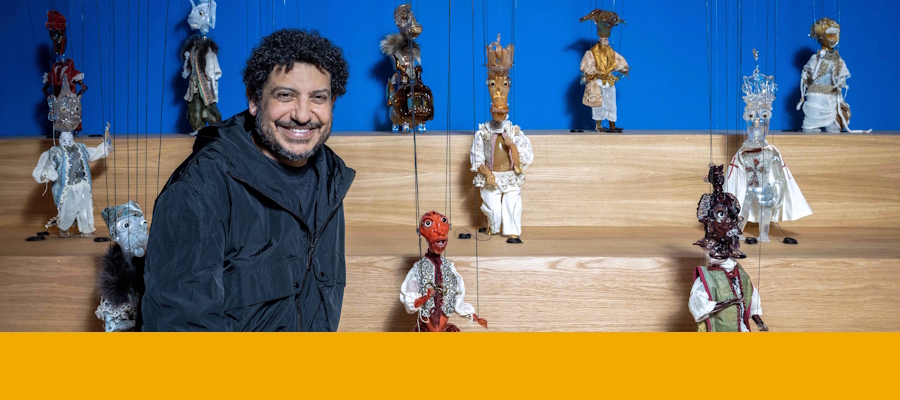
As it celebrates its 50th anniversary, the University of Edinburgh’s Talbot Rice Gallery remains true to its founding belief that art should be experienced directly. In the last half century, it has grown into one of Scotland’s most dynamic spaces for contemporary art and since 2011, when Edinburgh College of Art (ECA) became part of the University, Talbot Rice Gallery has been a key feature of the Art School’s profile. It showcases exhibitions of cutting-edge contemporary art, while demonstrating its relevance to research taking place across the University as well as the wider community.
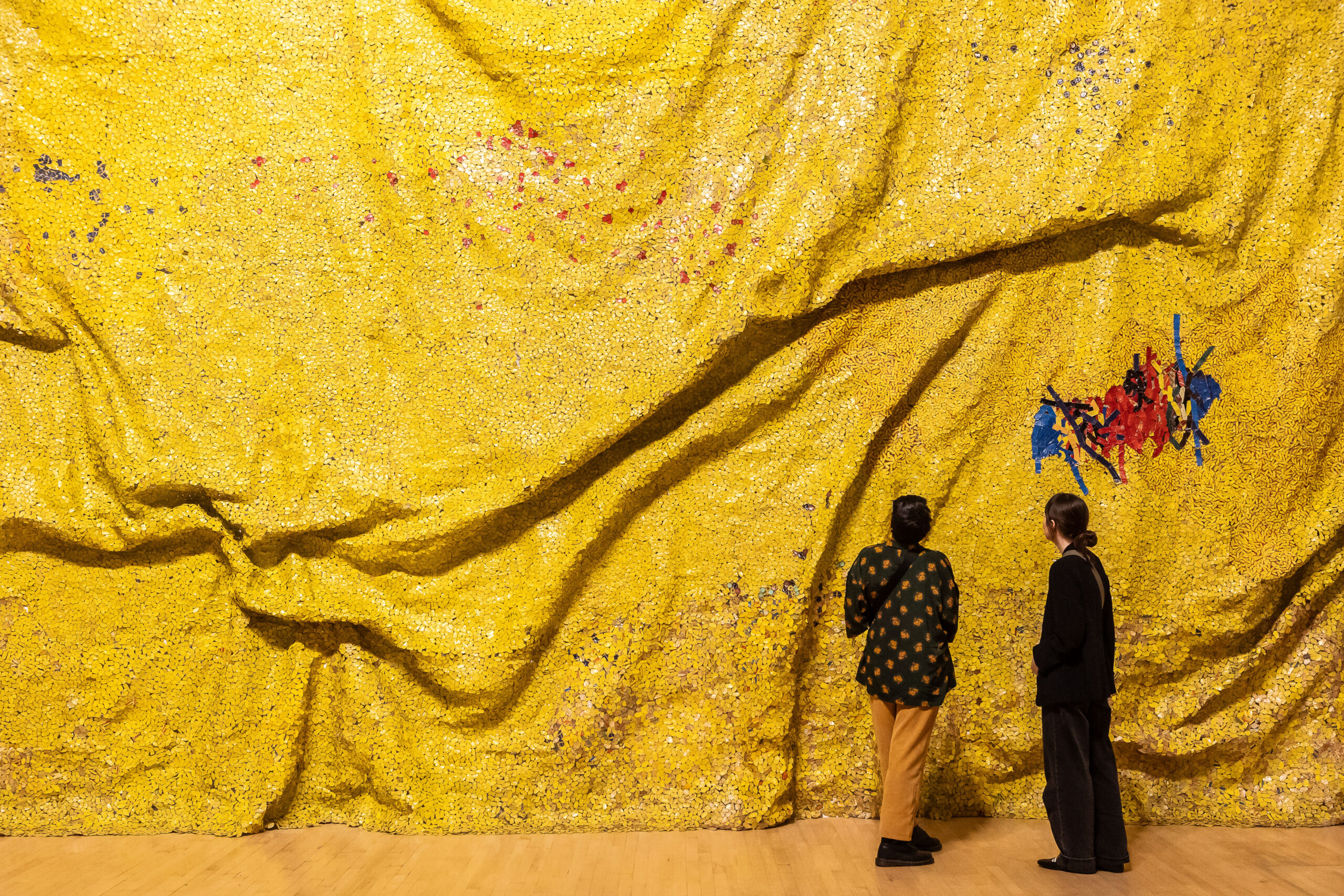
El Anatsui, ‘Scottish Mission Book Depot Keta’, 2024. Opening Reception. Courtesy Talbot Rice Gallery, University of Edinburgh. Photo: Sally Jubb
A vision rooted in experience
The Talbot Rice Gallery owes its existence to Professor David Talbot Rice, an eminent art historian specialising in Islamic and Byzantine art. He was passionate about the idea that students should not only learn about art from books but also experience it first-hand. With this belief, he successfully advocated for a gallery space within the University’s Old College. Though he sadly passed away before seeing it realised, his colleagues honoured his legacy by naming the new gallery after him.
The gallery was conceived with the idea that students of art and art history, both of which are now part of ECA, needed a space within the University where they could engage directly with art. It has evolved with the University itself and has grown into a public-facing institution with a global outlook. “Talbot Rice was always for the student body,” explains Professor Tessa Giblin, Director of the gallery and Personal Chair in Contemporary Curating. “But as the decades have gone on, the University has opened itself up much more to the public, and so has the gallery.”
Today, the gallery operates at the intersection of academic insight and artistic innovation, welcoming audiences from around the world into its distinctive blend of Georgian and white cube exhibition spaces. These spaces were once an anatomy theatre and the University’s natural history museum and continue to be a home for education and research.
Offering a window on the University
What makes Talbot Rice truly unique, according to Professor Giblin, is its location within the University ecosystem. “You find yourself in a wider network of minds,” she says. “There is always someone within the University who is a global expert in a field relevant to an artist’s interests.”
This synergy has led to collaborations such as a recent partnership between artist Samson Young and acoustics expert Professor Stefan Bilbao. Whether through new commissions or innovative reinterpretations of historical collections, the gallery sees itself as a bridge, connecting the University’s collective expertise with broader societal questions.
The gallery’s mission follows two broad curatorial strands. Firstly, it seeks to bring research, both contemporary and historical, out of the University and into public dialogue. Secondly, to use art to address urgent, complex issues facing society today.
“In an exhibition,” Professor Giblin explains, “you can show multiple perspectives on a complex issue like climate change or Brexit, rather than reducing it to polarised soundbites. We can emphasise the complexity of these issues through art.”
As a part of Edinburgh College of Art, Talbot Rice plays an active role in working with students. Whether it is engaging large cohorts with each exhibition and sharing further knowledge as well as insight to the inner working of a professional gallery, or working directly – curator to artist – with the students selected for the gallery’s student exhibition, Trading Zone, students gain experience which would otherwise be unavailable to them.
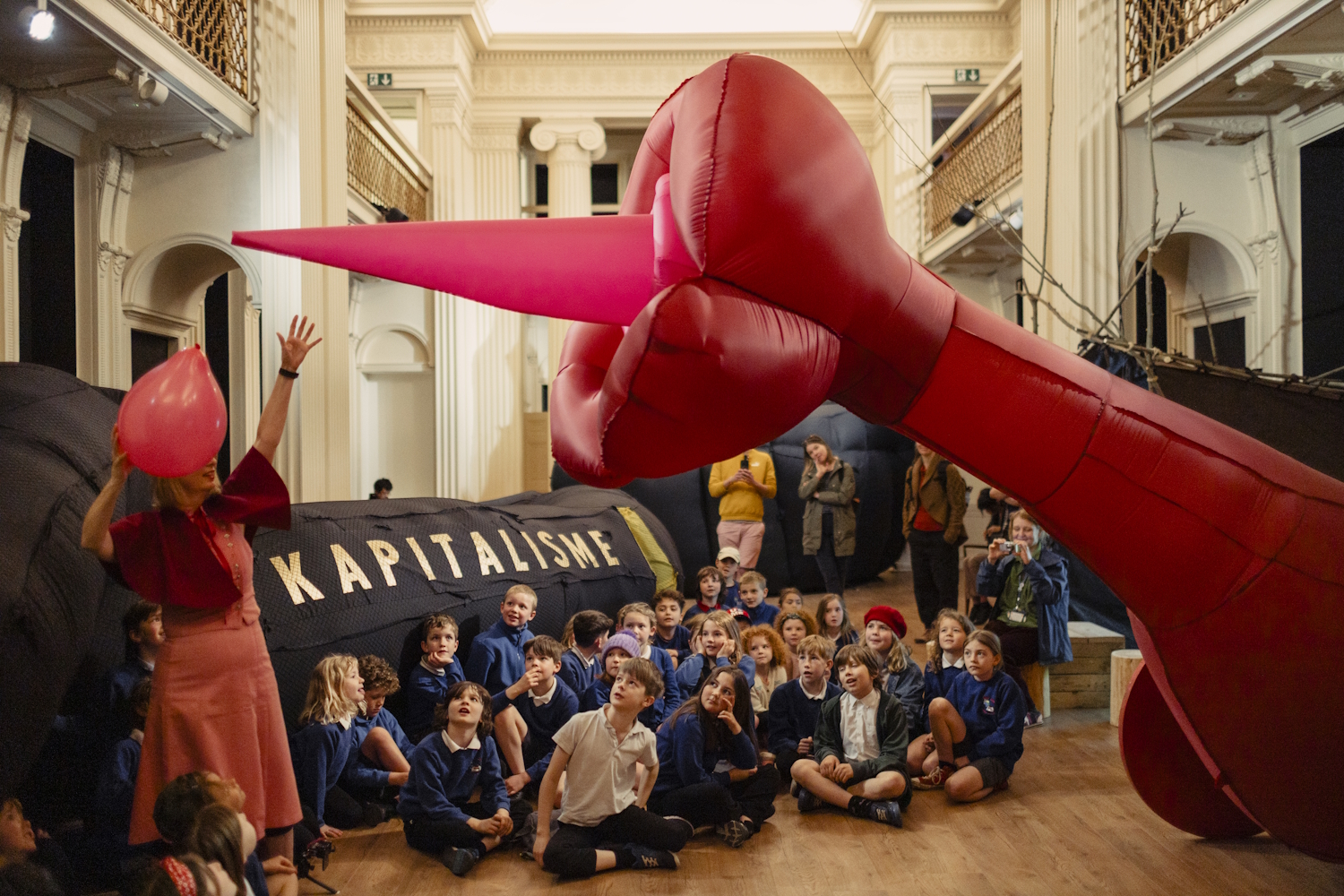
Walker & Bromwich, ‘Searching for a Change of Consciousness’, 2025. School Workshop. Courtesy Talbot Rice Gallery, the University of Edinburgh. Photo: Ross Fraser Mclean
Exploring and reflecting
The 50th anniversary celebrations offer a moment to reflect, not just on the gallery’s legacy, but on its continuing evolution. One of the centrepieces of the anniversary programme is the UK premiere of ‘Drama 1882’, an epic film installation by Egyptian artist Wael Shawky, which debuted in the Egyptian Pavilion at the Venice Biennale. The work explores a pivotal but often overlooked moment in Egypt’s history, when nationalist hopes were extinguished by foreign interference, largely by the British, and the movement dissipated.
“That moment in history has shaped more than seventy years of colonial rule,” says Professor Giblin. “Art can bring these forgotten or underexamined histories back into focus, and invite reflection on why the world is the way it is today.”
In its international programming, Talbot Rice acts as a conduit, bringing work of global significance to Scottish audiences while exporting Scottish talent and ideas abroad. “The next 50 years will see this gallery grow even stronger in its international networks,” Professor Giblin predicts. “We will continue to bring art of the quality of recent exhibitions of El Anatsui, Gabrielle Goliath, Emeka Ogboh or Angelica Mesiti to Scotland – art that we wouldn’t have any chance to see otherwise, and find ways to bring research out of the University and to the public.”
A community focus
Talbot Rice remains deeply committed to local communities, a principle embedded in its founding and alive in its present. The gallery works closely with nursery groups, schools, and further education colleges.
“We have a really thriving schools programme,” says Professor Giblin. “Primary schools, secondary schools, even nursery groups are coming in and seeing our exhibitions, which is something all of the staff particularly enjoy. We’re always trying to expand awareness of how people can come to Talbot Rice. It’s always free and it’s always going to be welcoming to people.”
The gallery also looks to find ways to engage with new and unconventional audiences, including one of their long-standing partnerships, which is with a maximum-security prison. “Our colleagues take a presentation of our exhibitions to the prisoners, and then run a workshop for them.” Professor Giblin explained. This unusual engagement allows for reflection and creativity in a group who may not otherwise be engaged with art.
Professor Giblin is particularly mindful of accessibility and the gallery is aware of the challenges that its location in such an old building presents, and has recently been able to install a new chair lift to allow for greater access to the Georgian gallery. Next year will also see a new passenger lift installed. It offers low light and sound sensory mornings and produces materials in a range of formats, for those visitors who are hearing or visually impaired.
The Gallery is aware that while many may love and be comfortable with the complexity of the material, for others it can be daunting. Aware of this, it strives to speak in a language that welcomes, not intimidates and helps the audience to engage, no matter the understanding or experience they may come in with.
Engaging with the Gallery
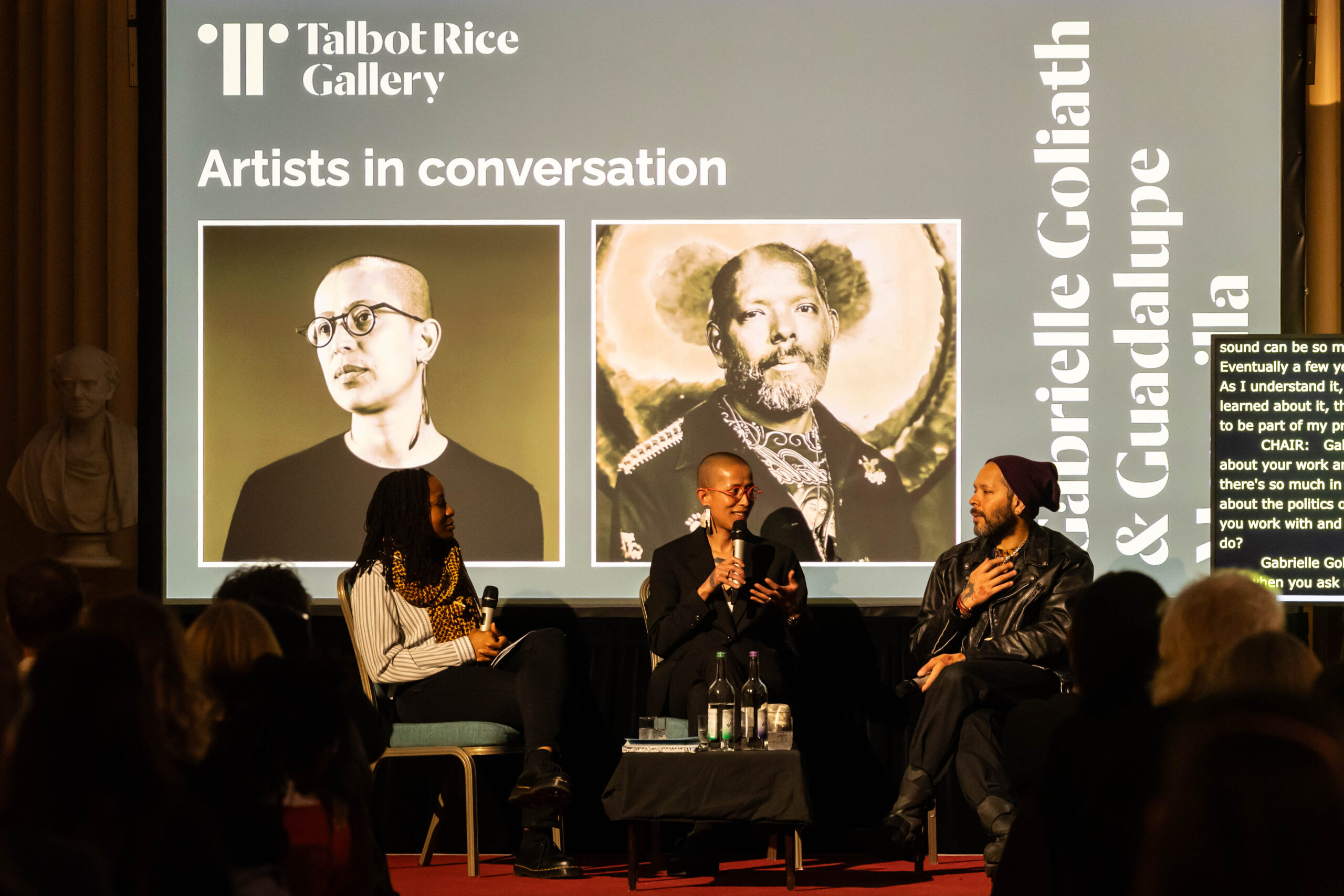
Gabrielle Goliath and Guadalupe Maravilla in conversation, 2024. Courtesy Talbot Rice Gallery, the University of Edinburgh. Photo: Sally Jubb
As the gallery continues to grow its reach and deepen its impact, it is inviting supporters to play a role in its journey. The relaunched Supporter’s Programme offers individuals and organisations a way to support Talbot Rice’s mission. The Supporter’s Programme helps to enhance the Gallery’s work, augmenting the support provided by Edinburgh College of Art and Creative Scotland and building a network around an exhibition and artist.
Donors can choose from several levels of support, starting at just over £20 a month, through a number of different levels of support to the Director’s Circle, where individuals will receive a wide range of benefits, including dinners, galas and special engagement directly with the artists. Supporters are invited to behind-the-scenes events, studio visits, artist talks, and exhibition previews, becoming part of the gallery’s inner circle.
“The Supporter’s Programme is a way to build a community around what we do,” says Professor Giblin. “And it allows donors to see their contribution making a tangible difference — whether that’s in our engagement with schools, community groups or the production of new, ambitious artworks.”
To mark the 50th anniversary, the gallery has also established the Commissioning Fund, which supports ambitious new commissions from artists that advance dialogue between contemporary art and academic research. This fund can be contributed to at any level and offers access to the same benefits as the Supporter’s Programme.
Looking ahead
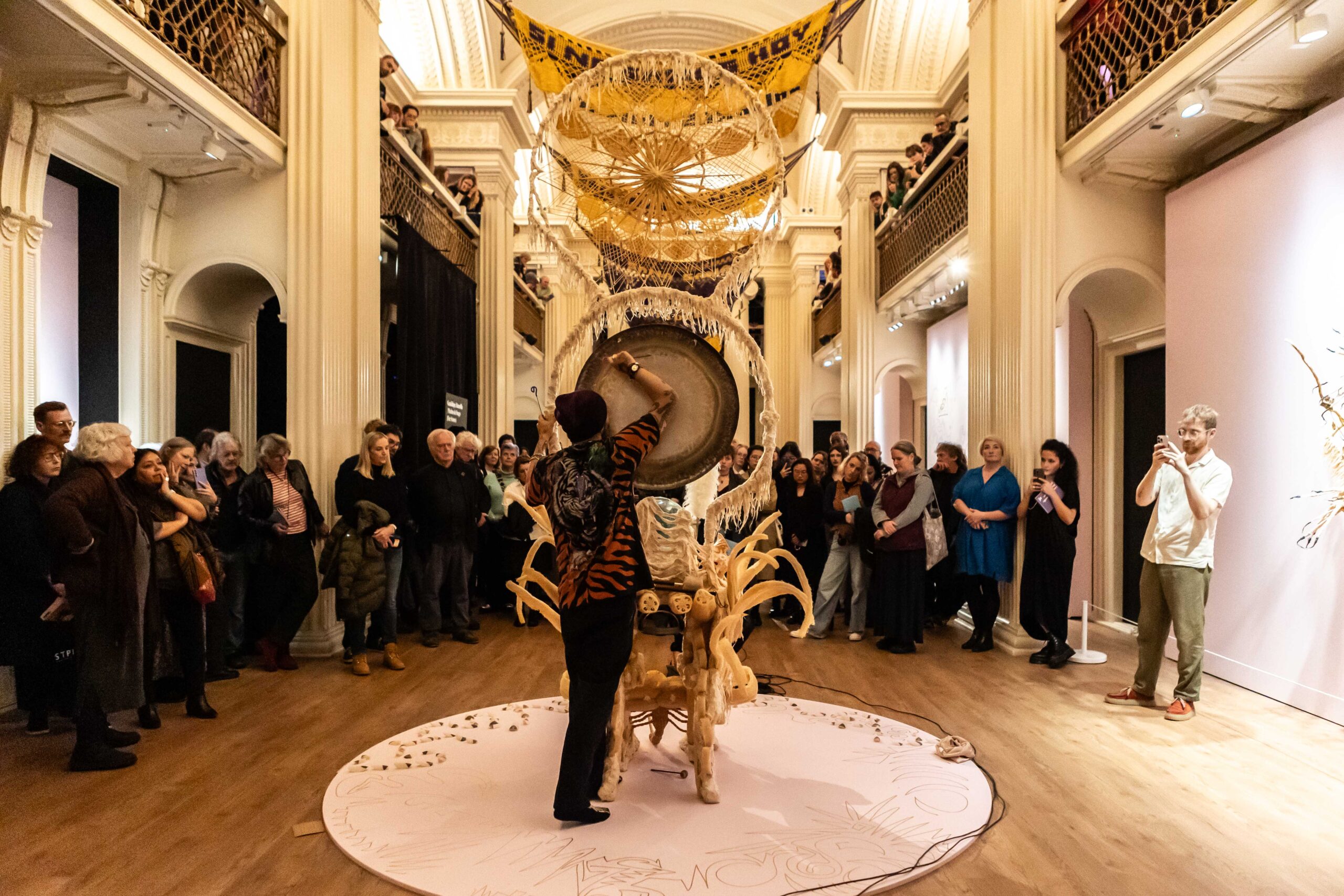
Guadalupe Maravilla, ‘Piedras de Fuego (Fire Stones)’, (2024), Opening Reception, Talbot Rice Gallery, University of Edinburgh. Courtesy of the artist; mor charpentier, Paris and Bogota; P·P·O·W, New York; and Tate, London. Photo: Sally Jubb.
If the last 50 years have seen the gallery grow from a visionary idea to a national institution with global reach, the next 50 are full of promise. Professor Giblin and her team are determined to strengthen the gallery’s foundations, grow its community, and deepen its connection to the University’s research environment.
In a city overflowing with culture, Talbot Rice stands out not just for its stunning architecture or world-class exhibitions, but for its role as a meeting point: between disciplines, between communities, and between the past and the future.
Or as Professor Giblin puts it: “We are a small team but we are all incredibly inspired by this gallery and its history. We have big shoes to fill, to ensure that the next fifty years are as successful as the last, but it’s an honour to work here.”
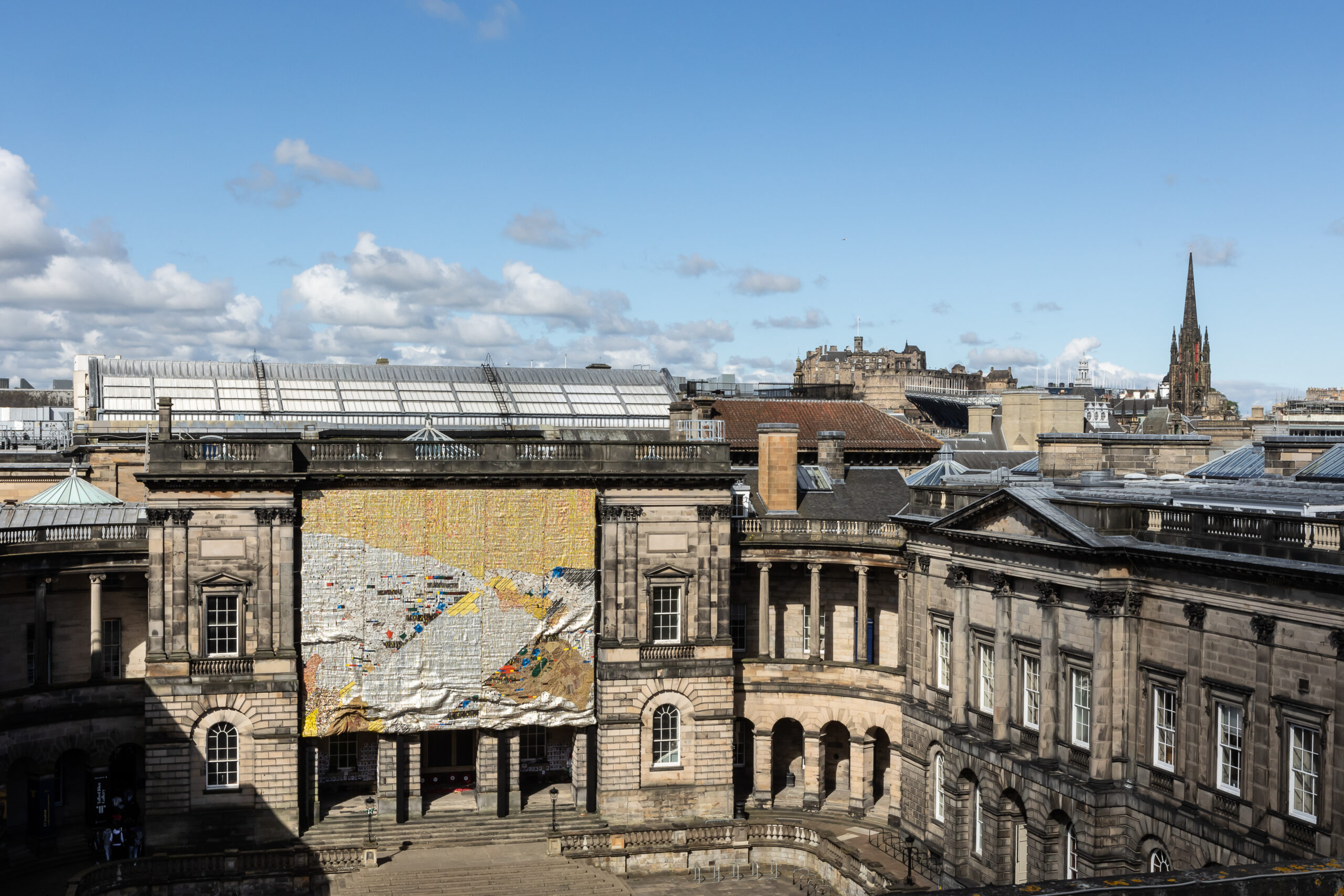
El Anatsui, ‘TSIATSIA – Searching for Connection’, 2013, Aluminium and copper wire. Installation view. Courtesy Talbot Rice Gallery, University of Edinburgh. Photo: Sally Jubb
Main image: Wael Shawky, Talbot Rice Gallery, 2025. Courtesy Talbot Rice Gallery, University of Edinburgh Photo: Neil Hanna
Support the Gallery
If you are interested in supporting the Talbot Rice Gallery, more information is available here:
Support Talbot Rice Gallery

